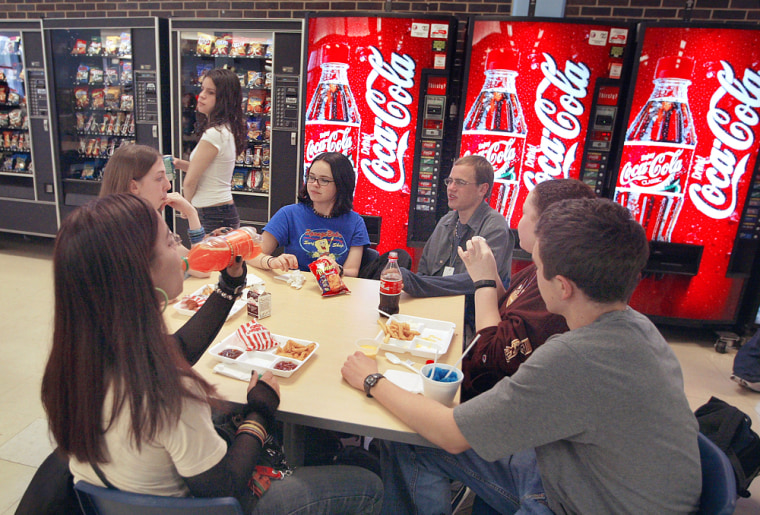It’s not often that an industry brags when sales are down.
But the American Beverage Association sounds almost proud when it declares in a report being released Thursday that the amount of non-diet soft drinks sold in the nation’s schools dropped more than 24 percent between 2002 and 2004.
The trade group’s report is an effort to deflate threats of a lawsuit against soft drink companies, which face mounting pressure as childhood obesity concerns have led schools to remove sodas.
During the same two-year period, the amount of sports drinks sold grew nearly 70 percent, bottled water 23 percent, diet soda 22 percent and fruit juice 15 percent, according to the report, which is based on data from beverage bottling companies.
Regular soda is still the leader within schools, accounting for 45 percent of beverages sold there this year. But that’s down from 57 percent three years earlier, the industry said, citing additional numbers based on 2002-2005 data.
Over the same three-year period, sports drinks jumped from nearly 7 percent to more than 14 percent, while water increased from 9 percent to nearly 13 percent.
Susan Neely, president of the beverage group, said the report — which did not count drinks sold at sports stadiums or those sold to raise money — shows social pressure alone can address concerns about the quality of beverages sold in schools.
“Litigation and legislation aren’t the answers to a complex social problem. Consumer preferences are changing and the choices students are making from school vending machines are reflecting that,” she said in a telephone interview Wednesday.
But the numbers didn’t impress Marion Nestle, a nutrition professor at New York University and critic of the soda industry.
While pleased that soft drink sales have dropped, she was disappointed that sports drinks seem to be taking their place. Though most sports drinks have fewer calories than regular soda, many still have a considerable amount of sugar.
“It’s a substitution of one bad product for another,” she said.
Erik Peterson, spokesman for the Washington-based School Nutrition Association, attributed the changes to widespread school policies limiting access to soda and junk food.
As of this year, he said two-thirds of the nation’s schools have some sort of limitation on foods or beverages. Nearly half have increased the selection of healthier beverages in vending machines and 18 percent have removed carbonated drinks entirely.
Richard Daynard, director of the obesity and law project at Northeastern University School of Law in Boston, said new laws and threats of lawsuits are the only reason so many schools have adopted more restrictive policies.
Daynard is one of the lawyers spearheading a proposed big tobacco-style lawsuit — which he hopes to file by the end of the year — accusing soft drink companies of using caffeine to hook school children on high-calorie beverages.
“If her [Neely’s] figures are correct, I think it may be a tribute to the role of legislation and concerns about litigation, rather than a refutation of it,” Daynard said.
